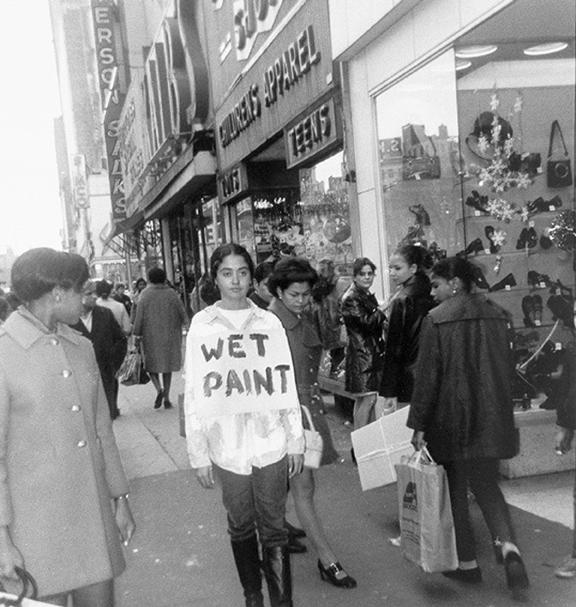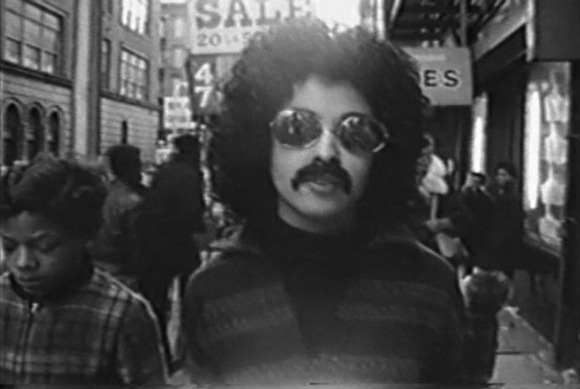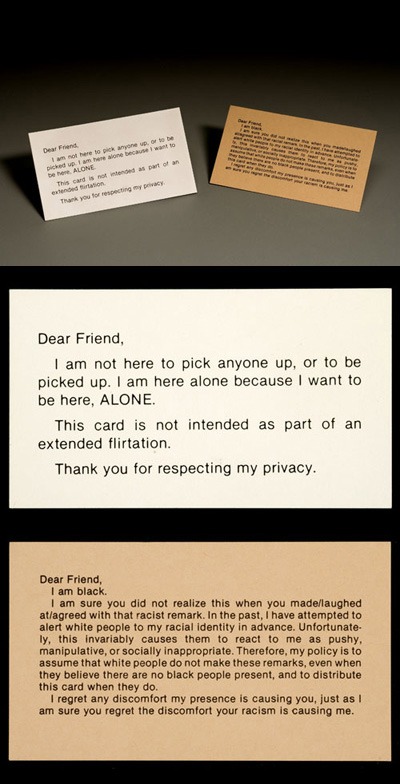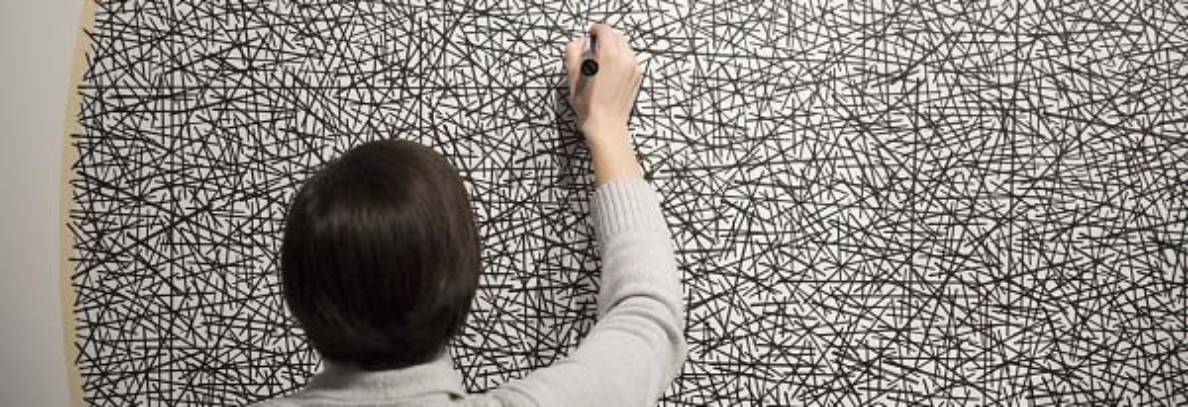Adrian Margaret Smith Piper (b. 1948) is a first-generation Conceptual artist and analytic philosopher. She began exhibiting her artwork internationally at the age of twenty, and graduated from the School of Visual Arts in 1969. Adrian Piper produces artwork in a variety of traditional and nontraditional media, including photo-text collage, drawing on pre-printed paper, video installation, site-specific sculptural installation, digital imagery, performance and sound works. Piper’s works locate the viewer in a direct, unmediated and indexical relation to the concrete specificity of the object of awareness. They consistently explore the nature of subjecthood and agency, the limits of the self, and the continuities and discontinuities of individual identity in the metaphysical, social and political contexts.

Catalysis III, 1970
In her Catalysis series, Adrian Piper physically transformed herself into an odd or repulsive person and went out in public in New York to experience the frequently disdainful responses of others.


In 1973, Adrian Piper created an alter-ego, the Mythic Being, who became the basis of a pioneering series of performances and photo-based works. Piper—a light-skinned woman of mixed racial heritage—transformed herself into the Mythic Being by donning an Afro wig, sunglasses, and mustache and adopting behavior conventionally identified as masculine. She then explored how she and others responded to the Mythic Being. In the process, she transformed the conceptual art practices common in the period, infusing them with strong personal and political content.

Calling Card, 1986
Piper also explores issues of personal identity and social boundaries. Using the antiquated nineteenth-century social convention of calling cards, Piper adopts a passive-aggressive approach to showcase how racism and sexism are intrinsically harmful. One of the two “calling cards” in the Indiana University Art Museum’s collections (the brown one) uses misperception of her race (she is a light-skinned African American) to directly confront anyone who utters a racist remark in her presence. The white card thwarts the presumption of men that she is available simply because she is unaccompanied. She says she handed these cards out in the above situations and has since exhibited them for viewers to take and use. While not precious or valuable in the traditional sense, they clearly represent her ideology. The focus in these mass-produced objects is not on craft, but on the ideas behind their production.
